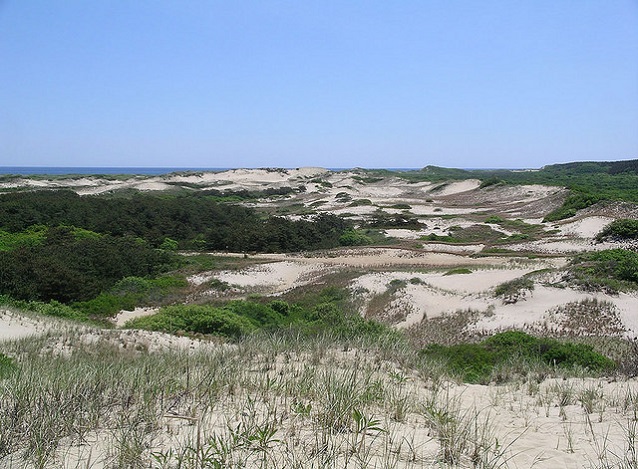
NPSphoto
A low relief depositional shoreline is typically the ocean edge of an extensive coastal plain composed of unconsolidated marine and fluvial sediment. The fluvial sediments will often be sourced from bedrock or mountains far inland. The littoral zone (littoral refers to coastal processes) is the area near the shore where sunlight penetrates to the sea floor and allows marine plants to grow.
Spits and bars are created by sediment transport—sediment being moved along the shoreline by wave action and near-shore currents is deposited in calm waters, sometimes in bars or estuaries. Barrier islands are offshore islands parallel to shore. They may protect the shoreline from wave action when they are located close to the mainland.
Coastal dunes can form on beaches or barrier islands, depending on wind conditions and sediment supply. Because of the extreme forces of the oceans, narrow coastal dune systems are vulnerable and can be eradicated by storm surges or overwash in a single event.
Last updated: April 22, 2020
